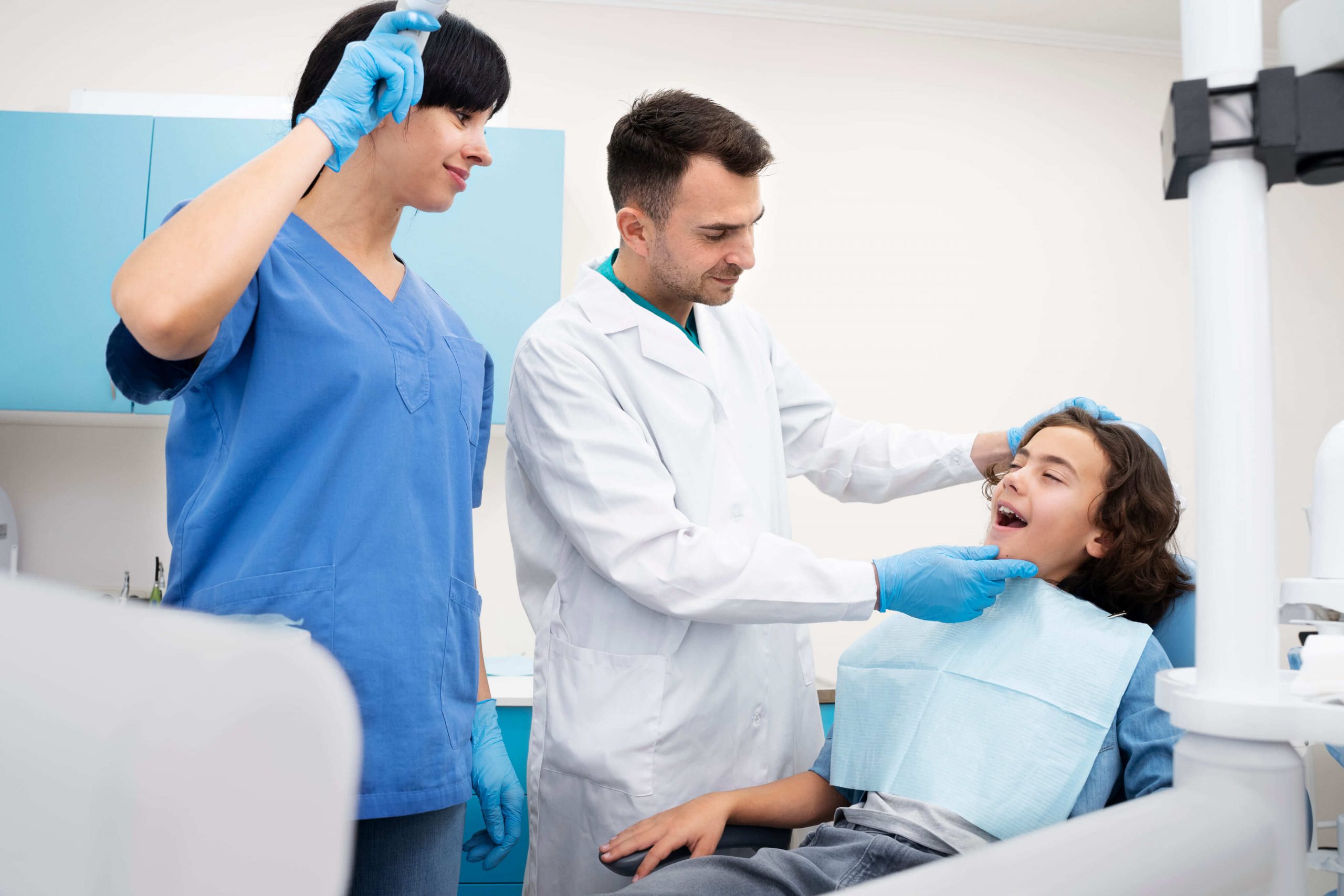
Holistic Wisdom Teeth Removal Technique
Are you looking for a dentist who removes wisdom teeth using a holistic approach? You have found us. We are located in Burtonsville near Silver Spring and Columbia Maryland? Dr. Gary Adams uses a protocol for removing teeth that includes platelet rich fibrin (PRF) and ozone. The technique optimizes the chances for a speedy recovery with minimal pain and swelling. The main goal is to not only remove the 3rd molars, but to help the jaw bone regenerate in the extraction sockets and prevent future bone infection.
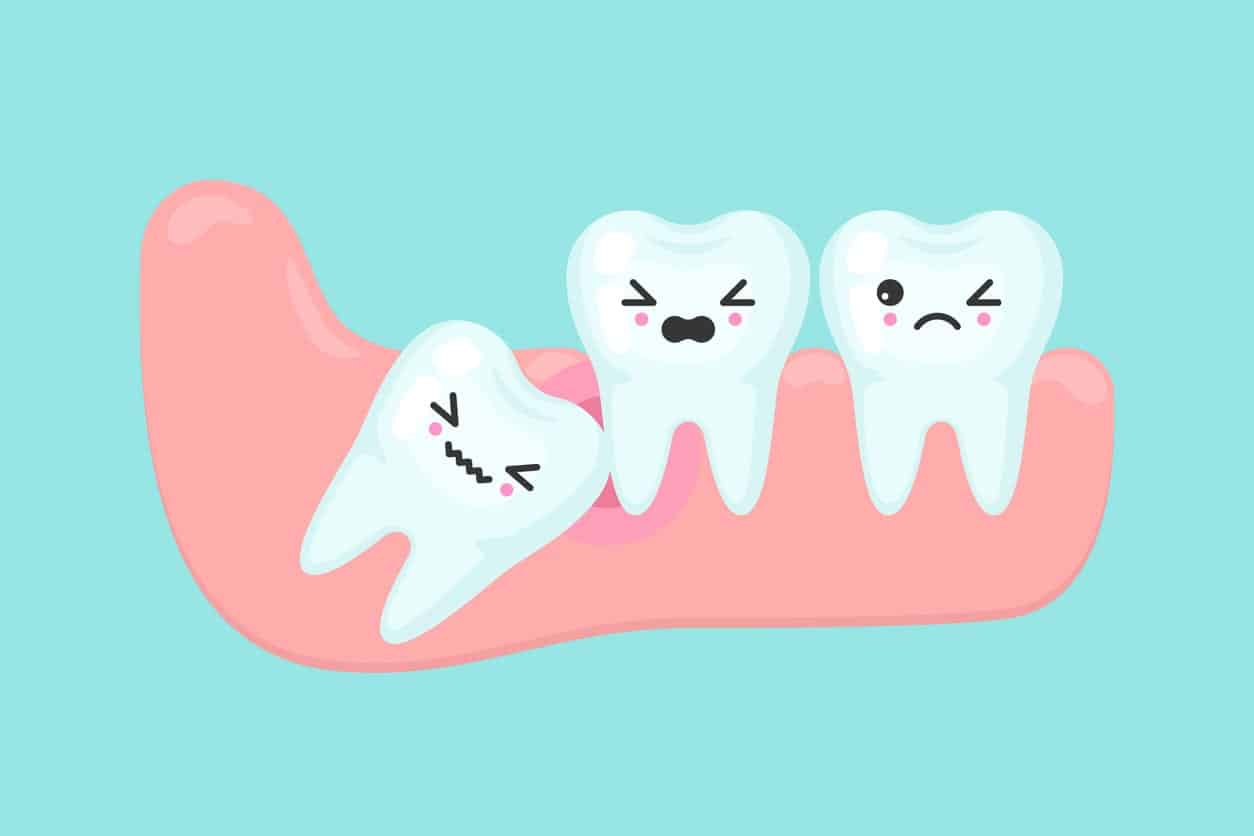
Wisdom tooth problems dental stomatology vector concept. Impacted tooth inside under inflammation gum
IV Sedation and Vitamin C
We offer IV dental sedation for wisdom teeth removal and other scary procedures including full mouth implants and other involved and long complex procedures.
Periodontal Ligament Removal after tooth extraction
We use PRF and ozone therapy to reduce pain, swelling, accelerate healing, prevent infections and to help jaw bone heal properly after extractions. The biological protocol for wisdom tooth surgery always involves removal of the periodontal ligament (PDL). Our removal protocol is described below which helps to insure smooth and proper healing of jaw bones.
Call 301-421-1996 for a consultation with Dr. Adams
What is the Holistic Wisdom Teeth Extraction Protocol:
- Carefully remove the complete tooth (very important not to leave pieces of root behind)
- Remove the periodontal ligament or PDL. This is the tissue that connects the tooth to the jaw bone
- Remove any soft tissue growing in the extraction site. This cyst tissue is typically full of bacteria and fungus.
- Ozone and Oxygen gas placed into the extraction site. The gas kills bacteria in the pores of the bone and promotes healing.
- Place PRF or platelet rich fibrin to promote rapid bone healing
- Place 1 or 2 stitches to keep gum tissue stable and hold the clot and PRF.
Holistic Wisdom Teeth Extraction Videos:
Dr. Adams has removed thousands of impacted 3rd molars. If you are nervous, Dr Adams offers different sedation options such as nitrous dental gas and full IV sedation. We will not judge you for being nervous. We offer complimentary consultations. Contact us if you want to meet Dr. Adams for a consultation.
How Are Wisdom Teeth Removed?
We remove teeth as carefully as possible without using much force and without causing unnecessary trauma. (sedation dentistry is a good idea if you have dental anxiety). People who are sedated during surgical appointments, stay relaxed and typically have less pain and swelling after the procedure. For example, pulling hard to get the tooth out quickly is not the best strategy. Separating a multi-rooted tooth into pieces and taking it out one root at a time will cause less pain and swelling. This approach is often called “atraumatic” technique. When a tooth is taken out strategically and with less force, it results in less infection and a faster wisdom tooth healing period. We use some of the most careful oral surgery techniques known.
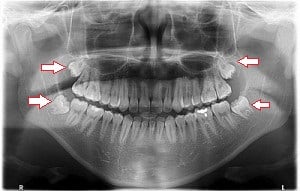
wisdom teeth removal dentist 112
Why We Use PRF With Wisdom Teeth Surgery:
PRF is a treatment that helps oral surgery procedures recover faster and decreases the risk of extraction socket infection. PRF is made by drawing a small amount of patient blood and spinning it in a centrifuge for 13 minutes at 2700 RPM. The Spinning process will separate out the yellow PRF layer of interest. PRF consists of fibrin, white blood cells and bone growth factors. The primary growth factor is bone morphogenic protein. PRF looks like a yellow jello-like substance that can be put into extraction sites. and PRF is help with dental implants and bone graft surgery sites.
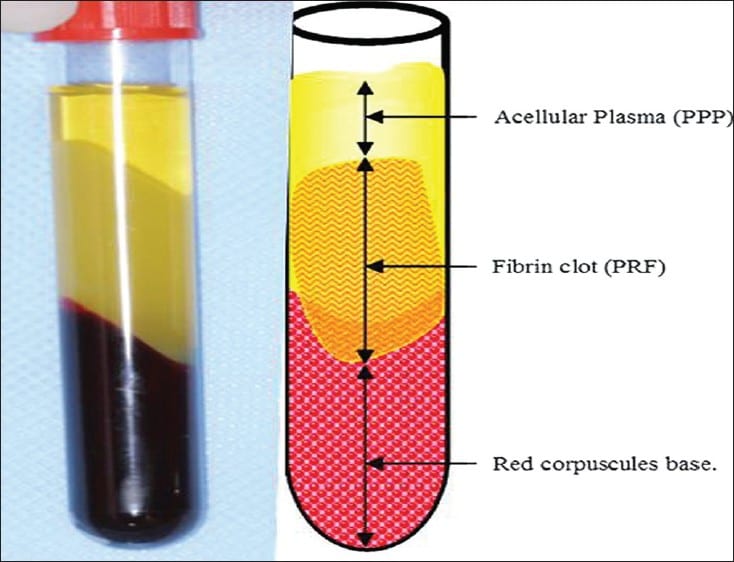
PRF extraction1
Ozone and Oxygen promotes healing and kills bacteria
Dental ozone and oxygen gas is placed into extraction sites to promote healing of gum and jaw bones. Ozone also kills bacteria, fungus and other pathogens and toxins hiding in the pores of bone cells. Bone does not have a lot of blood supply and is particularly susceptible to infection and healing delays. Ozone is especially helpful in preventing dry sockets. Once a tooth is extracted, it is very important to remove the PDL or the periodontal ligament and any irregular granular tissue / scar tissue. Once the extraction socket is cleaned then the ozone should be used in the extraction socket. This completes the extraction and cleansing of bony socket. The final step in natural holistic extraction technique is to place PRF into the extraction socket.
Impacted Surgical Techniques?
How to extract a two rooted wisdom tooth and preserve bone and the extraction socket. Basically, the roots are separated into two pieces and removed one root at a time. This technique can be done without the need to apply much force.
Different types of Impacted Teeth:
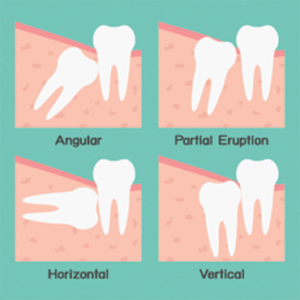
Partial Bony Impaction:
- The gum tissue should be gently reflected (not ripped off and all the way displaced), like peeling away but not removing, a small piece of an orange peel. The gum should be manipulated so the tooth can be properly accessed and visualized.
- Careful removal of any small amount of jawbone that has grown up and around the crown portion of the tooth.
- Separation of the two roots with a dental drill.
- Removal of the back root first. This needs to be done because the front root is normally stuck underneath the crown of the 2nd molar tooth in front of it. Removal of the back root is easy once it is separated from the front root.
- Removal of the front root, which can be easily scooted into the space created by removal of the front root.
- Placement of PRF is highly recommended especially in lower tooth extraction sites since the lower jaw has less blood supply and is more susceptible to infection.
- PRF Treatment
Angular Impacted Removal:
- The gum tissue should be gently reflected. The gum should be manipulated so the tooth can be properly accessed and visualized.
- Careful removal of any small amount of jawbone that has grown up and around the crown portion of the tooth.
- Removal of the entire crown of the tooth with a dental drill. In this case the entire crown of the tooth will be underneath of the tooth in front of it.
- Separation of the two roots with a dental drill.
- Removal of the back root
- Removal of the front root by sliding it into the space where the back root was, and then out of the extraction site.
- PRF Treatment
Horizontal Bony Impaction Removal Strategy:
- The gum tissue should be gently reflected. The gum should be manipulated so the tooth can be properly accessed and visualized.
- Careful removal of any small amount of jawbone that has grown up and around the crown portion of the tooth. Horizontal teeth may have more bone removal than partial bony and angular impactions. The extra bone removal called “alveoloplasty” is necessary because there is more bone volume burying the tooth and more access is needed to get the Horizontal tooth out of the jaw bone.
- Complete removal of the crown of the tooth
- Separation of the roots.
- Removal of the top root up and out of the jaw
- Removal of the bottom root, with the access created by removing the top tooth.
- PFR Treatment
Vertically Impacted Technique:
- The gum tissue should be gently reflected. The gum should be manipulated so the tooth can be properly accessed and visualized.
- Careful removal of any small amount of jawbone that has grown up and around the crown portion of the tooth. Vertical teeth may have more bone removal than partial bony and angular impactions. The extra bone removal is necessary because there is more bone volume burying the tooth and more access is needed to get the Vertical tooth out of the jaw bone.
- Separation of the roots.
- Removal of the back root
- Removal of the front root into the space created by removal of the back root.
- PRF Treatment
Wisdom Teeth Surgical Procedure Tips:
- Quickly and Carefully
- Taken out the “smart way” or strategically
- Without high force
- With minimal disturbance to the surrounding tissues
- With PRF treatment into the extraction socket and the best clean-up techniques possible
- Perfect post operative instructions
- Appropriate prescriptions including antibiotics, anti-inflammatories, pain medication when necessary
Cost of Wisdom Teeth Surgery
Wisdom teeth removal cost is $300 – $750 each depending on the position in the jaw and what is covering it. Dental Insurance will often cover up to 80% of surgical costs. Dental anesthesia and sedation procedures are an option but add to the cost of wisdom teeth removal procedures.
Do I need to get put to sleep for Wisdom Teeth Removal?
No, but It would not be a bad idea. It is only necessary to keep you calm and comfortable during the procedure. Sleep sedation will help you remain calm and comfortable throughout the procedure while your body can preserve it’s energy for healing and recovery. People who have sedation report less dental anxiety during the procedure and for future dental appointments. Sedation dentistry usually results in less pain and swelling and complications after the procedure. Full Sedation requires having someone drive you to and from your dental appointment and you will not be able to drive or work for 24 hours.
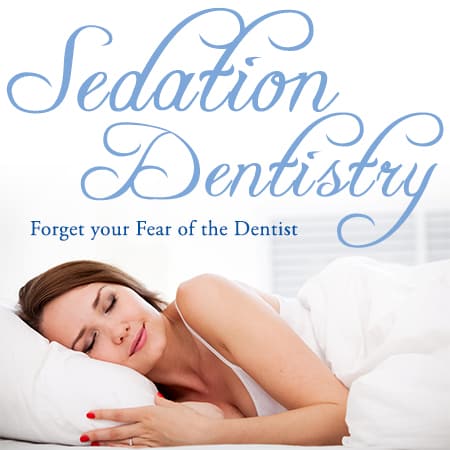
sleep dentist chevy chase md 1
Do I need a 3D Cone Beam / CT Scan?
Yes. For oral surgery services we need to identify where the wisdom teeth are and vital structures such as nerves and arteries in your jaw to avoid aggressive surgical incisions and unnecessary trauma or permanent damage during the procedure.
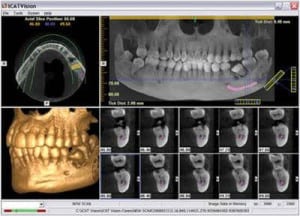
oral surgeon chevy chase bethesda 12
Is it Necessary to Remove Wisdom Teeth?
It is always best to remove impacted wisdom teeth, but… sometimes removing impacted wisdom teeth can do more harm than good. For example, if a horizontal wisdom tooth impaction is removed and the patient experiences permanent jaw nerve damage, hindsight may suggest the tooth may have caused less harm had been left alone. Removing wisdom teeth may be a matter of whether or not there is infection present or whether or not the impacted wisdom tooth is harming the root of the molar in front of it. It is best to get a consult from an oral surgeon or another dentist with a oral surgery experience.Do I need to remove wisdom teeth? Maybe.
If they are too far back to clean or if there is not enough room in the mouth for them to grow into the mouth, than Yes. If you do not take them out, one day your jaw will swell and you will be forced to drop everything you are doing.
What are the potential complications?
Damage to the nerve in the lower Jaw causing partial or complete numbness to the lip area. Very uncommon and usually only temporary. Communication into the upper sinus. Usually happens when a root has grown into the sinus. Usually heals on its own.
Wisdom Teeth are too far back to properly clean. In fact cleaning wisdom teeth in many cases is impossible. Wisdom teeth can cause dental cavities, periodontal or gum disease. Wisdom Teeth can have cysts form around them and severely damage the jaw bone. Wisdom Teeth also can interfere with proper closure of the upper and lower jaws. Wisdom teeth can cause a poor bite and can lead to TMJ pain.
By retaining WT, most individuals will get dental cavities or dental caries, periodontal or gum disease and TMJ problems. Many people can have severe damage to their second molars which are the teeth in front of the Wisdom Teeth. Often WT can come in sideways. When the teeth come in sideways which is also called horizontally impacted, the can cause severe dental decay on the second molars. Sometimes the damage to a second molar can be so severe, the patient will lose both their Wisdom Teeth and 2nd molars. Most of the time removal is a matter of health and preventative dental care.
What is the Recovery period?
Usually some pain for 1-2 days (relieved by ibuprofen and pain meds) followed by soreness for a week or so.

 (301) 421 1996
(301) 421 1996 burtonsvillesmiles@gmail.com
burtonsvillesmiles@gmail.com